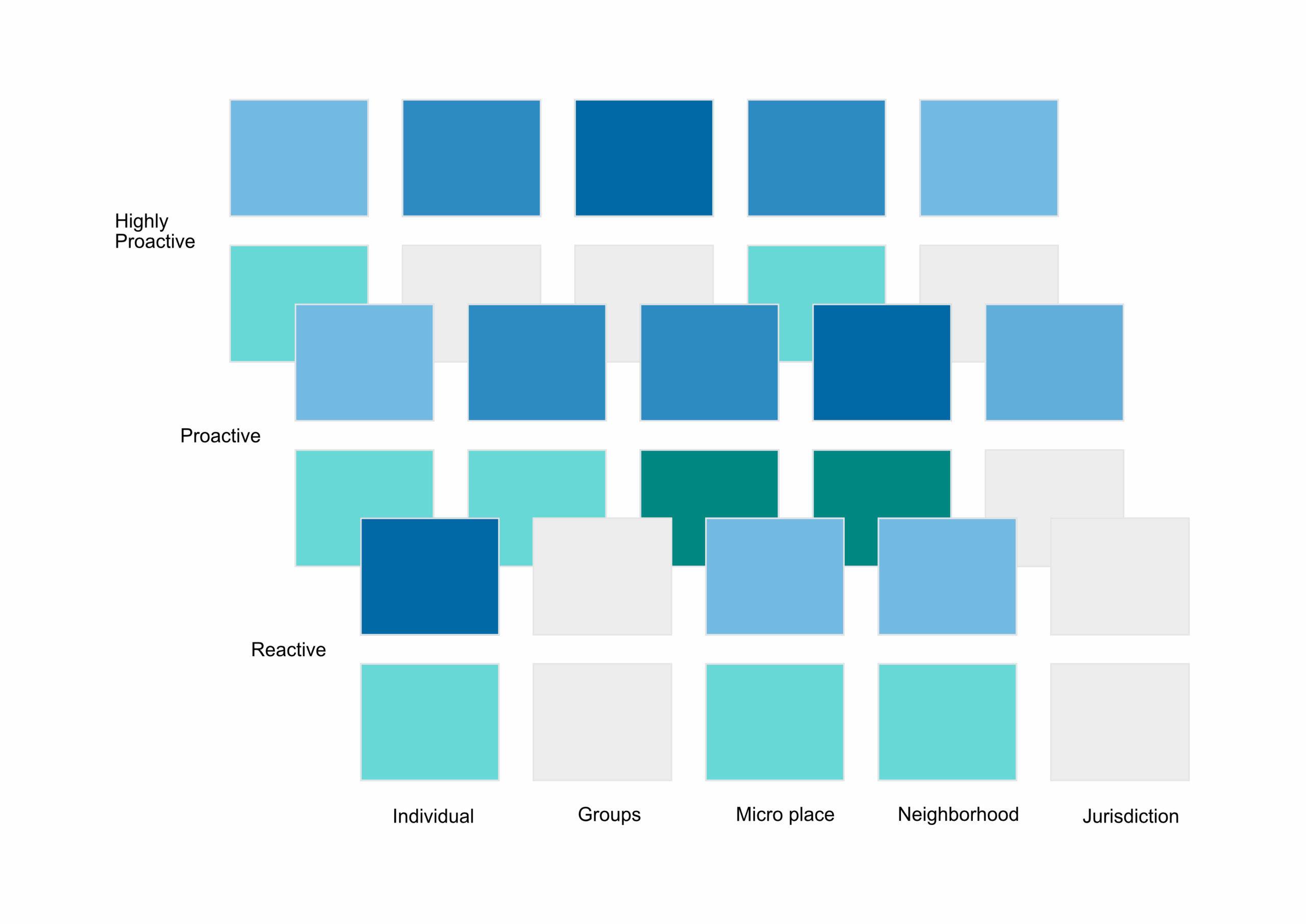The Evidence-Based Policing Matrix
What strategies can be effective in reducing crime and disorder in policing? The Evidence-Based Policing Matrix is a research-to-practice translation tool that collects, summarizes, and organizes moderate to very rigorous evaluations of police interventions, allowing agencies and researchers to view the field of research in this area. This Matrix site is currently operational with studies published through 2022.
THE
MATRIX
categorizes evaluated police tactics according to three common dimensions of crime prevention - the nature of the target, the extent to which the strategy is proactive or reactive, and the specificity or generality of the strategy (see the Matrix Key to learn more). This visualization reveals clusters of studies within intersecting dimensions (e.g., Micro Place + Focused + Proactive). By clicking onto a magnifying glasses below, you can see all studies within certain clustering. Or, you can develop your own search (e.g., "Micro Place + Proactive + Effective") in the search interface. Each individual study is also summarized in plain language that describes the intervention and the findings.

Level of Effectiveness
Indicates no active studies
Specific
High
Low
High
Low

Level of Effectiveness
Indicates no active studies
Specific
High
Low
High
Low
X-Axis | Type or Scope of Target
Individuals
Interventions which target distinct individuals or certain types of individuals such as violent youths, repeat offenders, sex offenders, or drunk drivers.
Groups
Interventions which target gangs or other cooffenders (individuals who offend in concert).
Micro-Places
Interventions which target very small geographic locations such as a block, street segment, alley, intersection, specific address or cluster of addresses.
Neighborhoods
Interventions which target larger geographic units such as census tracts, police beats or sectors, "communities", or "neighborhoods".
Jurisdictions
Interventions which target politically distinct and more local or within-state jurisdictions such as cities, counties, parishes, or townships.
Y-Axis | General
General tactics often have broad deterrence goals, such as preventing anyone from committing a crime, but do not target specific crimes, people, or mechanisms of crime. Examples might include increasing patrol presence in a neighborhood, a law banning guns in a city, or DARE programs given to all students.
Y-Axis | Focused
Focused tactics concentrate on particular types of crimes, groups, people, or crime prevention mechanisms. Examples might include using nuisance abatement laws to reduce drug dealing on a block, targeting youths who may be at high risk of joining a gang, or using special prosecution schemes against those who carry firearms.
Z-Axis | Level of Proactivity
Reactive
Reactive tactics are approaches which strengthen or alter the reaction to crimes, but still focuses on single crimes after they occur. Examples include rapid response to calls for service, random preventative patrol, traditional investigation and arrest strategies, or case building.
Proactive
Proactive tactics tend to use past incidents to create patterns to address immediate problems. These tactics do not necessarily seek a long-term or permanent effect, and do not focus on early risk factors prior to offending onset. Examples may include hot spots policing, quality of life arrests, or increased traffic stops in a particular location.
Highly Proactive
Highly Proactive tactics focus on early risk factors, developed from patterns of crime and criminality to reduce the possibility of crime occurring in the more distant future and over the long term. Examples might include police afterschool programs for juveniles, DARE, problem oriented approaches, or environmental changes.

